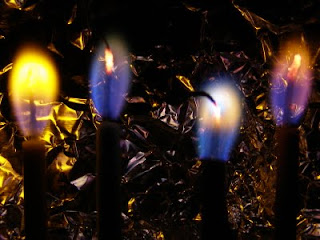On
a far-off planet known as OGLE-TR-56b (a "hot Jupiter" which orbits its star in about the length of a terrestrial day), a hellish weather phenomenon may occur:
Intriguingly, the temperature of OGLE-TR-56b's upper atmosphere is theoretically just right to form clouds, not of water vapor, but of iron atoms. Earlier this year, astronomers reported evidence for iron rain on brown dwarfs. However, such storms only occur over a short portion of a brown dwarf's lifetime, while the newly discovered 4 billion year-old OGLE-TR-56b should still be experiencing this exotic weather, thanks to strong heating from the nearby star.
Elsewhere in the cosmos,
in the nebula surrounding a newly-forming star, it rains crystals of a green mineral called olivine:
"We propose that the crystals were cooked up near the surface of the forming star, then carried up into the surrounding cloud where temperatures are much colder, and ultimately fell down again like glitter." ...
"If you could somehow transport yourself inside this protostar's collapsing gas cloud, it would be very dark," said Charles Poteet, lead author of the new study, also from the University of Toledo. "But the tiny crystals might catch whatever light is present, resulting in a green sparkle against a black, dusty backdrop."
Illustration of the crystal rain from
NASA











